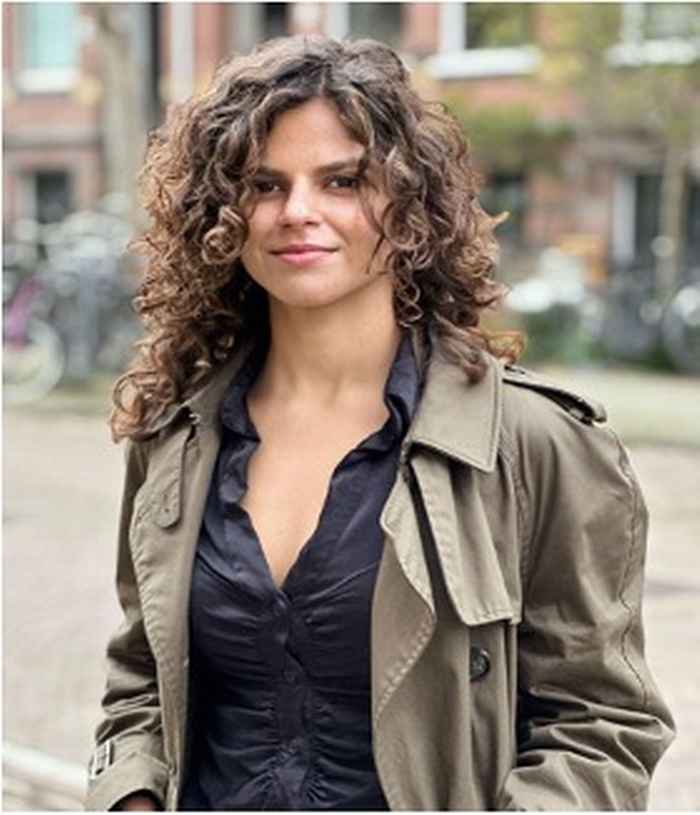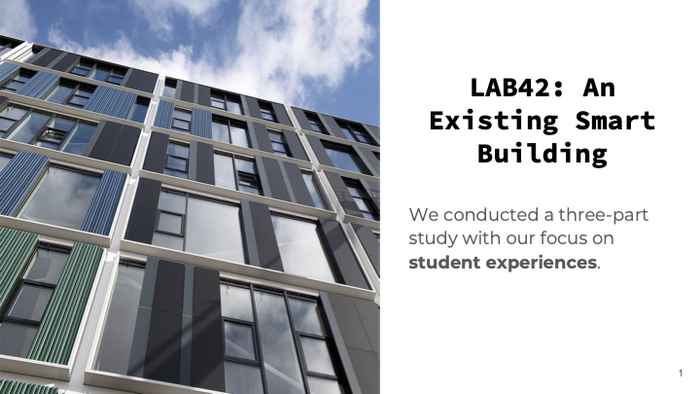The calming effects of a well-designed building
13 June 2024

Buildings as machines
Shruti Rao is a PhD researcher in the field of Human Computer Interaction, but you may also say: Human Building Interaction. In her view, buildings are more and more becoming machines. ‘With the use of technology, buildings are becoming smarter. With smart facades for instance, that thermodynamically react to the environment. They have become very controlled objects, with almost no human in the loop.’ Shruti developed an interest in architecture in Milan, Italy, where she grew up. After bachelors in maths and economics in Canada, a rather different field, she moved to the Netherlands for a joint big data engineering master from the UvA and VU. During a short research period at neighbouring CWI, her supervisor mentioned an opening PhD position on Human Building Interaction at the Digital Interactions Lab (DIL) of the Informatics Institute. ‘That looked like a really nice link to my old, almost forgotten interest into architecture and buildings. Also, the human centred perspective made it the perfect fit for me, because I think it's very important to keep the focus on people, and how technology can be built for people and not the other way around.’

Building walk
LAB42, the ‘new hub for the development of talent in the field of Digital Innovation and Artificial Intelligence’, was designed by Benthem Crouwel Architects and opened in August 2022, right when Rao started her PhD. This made the new building the perfect study object. So far, she conducted three studies. The first one was a survey amongst students, asking how they felt when being present in LAB42. She put stickers everywhere in the building, with a QR-code that linked to the survey. 256 students responded. ‘The most common emotion that people said they felt in this building was calm. In fact, people said things like: I'm very stressed about my exam, but this room makes me feel calm.’ For comparison, Rao did the same survey in building 904, where the results were much more diverse. Second, she organised what is called a ‘building walk’ with groups of students. She asked the students how they felt when walking through the different building zones.

Biophilia
The third part of her research was to place sensors in the building, that measured air quality, temperature, noise, light, and occupancy. ‘Across all three studies, this feeling of calm turned out most important. It was because people thought they had access to natural light, even if this was not the case. Primarily, the concept of natural light made people feel calm.’ This is wat Rao calls biophilia. ‘It is the inborn connection that we have with nature. We know from studies that nature has a positive impact on people. We like to see how time passes through the changing of light, even if it’s artificial light. We can use technology to bring nature and the outdoors indoors.’ Rao’s study also marked several places in the building where people felt less calm. ‘Surprisingly, in some areas people thought the ceilings were lower, although this was not the case. People felt cramped. And in some areas, they said: I have to look at my phone to see the time, because of the lack of natural light.’
My main question would be: how can we use technology to bring these biophilic ideas into buildings that can help people feel better and healthier?Shruti Rao
Design session
So, despite the overall positive results, there is still room for improvement in LAB42. That is why, for the next part of her research, Rao is organising a design session together with the architects and users of the building. ‘My main question would be: how can we use technology to bring these biophilic ideas into buildings that can help people feel better and healthier?’ Part of this step would be to develop prototypes of smart and multisensory biophilic spaces, and to have users experience these prototypes with the use of AR (Augmented Reality) and VR (Virtual Reality)-technology. Unfortunately for Rao, this comes with a lot of legal paperwork, which takes up much of her time right now. ‘I consider this one the less fun part of my research, but it needs to be done. Involving users should be common practice, but this is not often the case because it takes more effort. I hope my research can bridge this gap.’
Finally, Rao wants to emphasize that having a pleasant, user centred building should not be limited to new fancy buildings. ‘I hope my research could be a really good use case for technology to be transported into any space it is put into. It should be able to go anywhere, in classrooms, and maybe even people’s homes.’